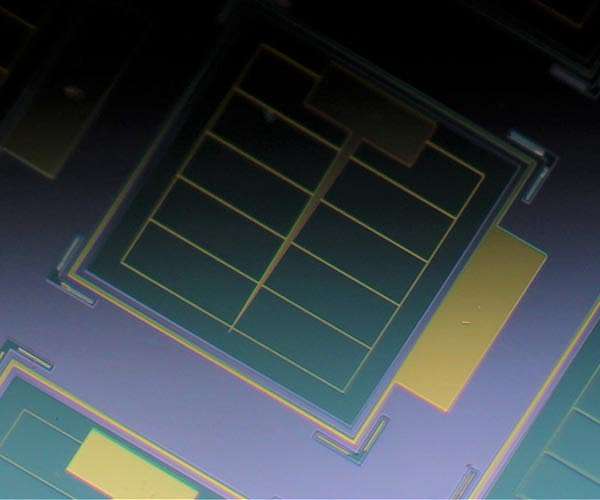AI-powered process reveals chemical keys to solar energy advances
Artificial intelligence has emerged as a transformative tool in research, but the inability to explain its decision-making process – often referred to as the “AI black box” – poses a significant challenge. However, an interdisciplinary research team from the University of Illinois Urbana-Champaign has addressed this problem by integrating AI with automated chemical synthesis and experimental validation. Their efforts have uncovered the chemical principles that AI used to improve molecules designed for harvesting solar energy.
The team’s approach resulted in light-trapping molecules that are four times more stable than the original versions. Furthermore, the research has provided new insights into the chemical factors that contribute to this stability, addressing a long-standing challenge in materials development.
This groundbreaking research was a collaborative effort led by U. of I. professor of chemistry Martin Burke, professor of chemical and biomolecular engineering Ying Diao, professor of chemistry Nicholas Jackson, and professor of materials science and engineering Charles Schroeder, in addition to chemistry professor Alan Aspuru of the University of Toronto. Guzik. The findings have been published in the journal ‘Nature’.
“New AI tools have incredible power. But when you try to open the hood and understand what they do, you’re usually left with nothing useful,” Jackson said. “This can be very frustrating for chemistry. AI can help us optimize a molecule, but it cannot tell us why it is the optimal one: what are its important properties, structures and functions? Through our process we have identified what gives these properties molecules greater photostability. We turned the AI black box into a transparent glass ball.”
The research was driven by the need to improve organic solar cells, which use flexible, lightweight materials as opposed to traditional stiff, heavy silicon-based panels.
“What hinders the commercialization of organic solar photovoltaics are stability issues. High-performance materials degrade when exposed to light, which is not what you want in a solar cell,” Diao explains. “They can be made and installed in ways not possible with silicon and can also convert heat and infrared light into energy, but stability has been an issue since the 1980s.”
The method developed by the Illinois team, known as closed-loop transfer, starts with an AI-guided optimization protocol called closed-loop experimentation. The AI was tasked with improving the photostability of light-trapping molecules. In each round of closed-loop synthesis and experimental characterization, the AI provided new chemical candidates to explore. The data from these experiments was fed back into the model, refining the AI’s suggestions until the desired outcome was achieved.
Over five rounds of closed-loop experiments, the team produced 30 new chemical candidates, using building block-like chemistry and automated synthesis methods developed by Burke’s group at the Molecule Maker Lab, located in the Beckman Institute for Advanced Science and Technology at the U. of I .
“The modular chemistry approach is a wonderful complement to the closed-loop experiment. The AI algorithm requests new data with maximum learning potential, and the automated molecule synthesis platform can generate the new required compounds very quickly. Those compounds are then tested, the data are going back to the model, and the model is getting smarter,” said Burke, who is also a professor at Carle Illinois College of Medicine “Up until now, we have been largely focused on structure. Our automated modular synthesis has now expanded into the realm of function exploration.”
Rather than simply identifying the end products, as in a typical AI-led campaign, the closed-loop transfer process also sought to uncover the underlying rules that contributed to the improved stability of the new molecules.
As the closed-loop experiment progressed, another set of algorithms continuously analyzed the generated molecules, developing models to predict chemical characteristics associated with stability in light. Once the experiment was completed, these models provided new, laboratory-testable hypotheses.
“We use AI to generate hypotheses that we can validate and then drive new human-driven discovery campaigns,” Jackson said. “Now that we have some physical descriptors of what makes molecules photostable, the screening process for new chemical candidates becomes dramatically easier than blindly searching around in chemical space.”
To validate their photostability hypothesis, the researchers tested three different light-trapping molecules with the identified chemical property – a specific high-energy region – and confirmed that selecting the right solvents could improve their photostability by up to four times.
“This is a proof-of-principle for what can be done. We are confident we can tackle other material systems, and the possibilities are only limited by our imagination. Ultimately, we envision an interface where researchers can perform a chemical function can input whatever they want and the AI will generate hypotheses to test,” said Schroeder “This work could only happen with a multi-disciplinary team, and the people, resources and facilities we have in Illinois, and our collaborator in Toronto. Five groups came together to generate new scientific insights that would not have been possible with any of the three.” subteams working in isolation.”
Research report:Thanks to closed-loop transfer, AI can deliver chemical knowledge


